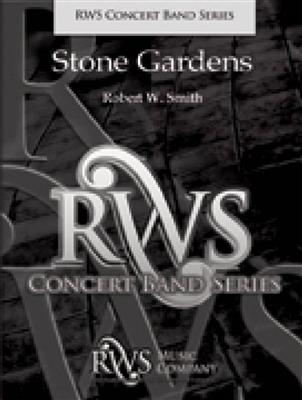Results
-
£65.99
The Hawks Revenge - Patrick J. Burns
Lots of energy in this piece from the very beginning where players are invited to stomp their feet. Plenty of excitement and contrast as a boisterous little melody is tossed around the band, accompanied by a variety of colorful points of light, and highly active percussion. Based on an ancient Japanese song, "Moko Yokocho." A treat for the young band and their audience!
Estimated dispatch 7-14 working days
-
£60.50
Spirit Dance - George Farmer
From the beginning rhythmic eighth notes to the driving Coda, this piece never stops! And talk about an infectious melody - you will hear this little Aeolian tune sung and whistled around your band room long after rehearsal! There is a lot of spirit and a lot of dance in this sprightly piece which appeals to the "inner spirit" in all of us!
Estimated dispatch 7-14 working days
-
 £43.99
£43.99Antiphony - Sandy Feldstein
Antiphony is a serious composition that will highlight your budding percussionists. This bold and harmonically progressive piece has an extensive percussion section that is placed antiphonally around the band to give the piece a stereophonic effect.
Estimated dispatch 7-14 working days
-
 £73.50
£73.50Stone Gardens - David Shaffer
"Stone Gardens" is inspired by the beautiful and peaceful gardens of heroes lost and fallen. Beginning with a solo trumpet that conjures memories of conflicts present and past, the piece continues with a beautiful hymn statement paying homage to those that have made the ultimate sacrifice. A bold and aggressive statement follows with musical inspiration drawn from campaigns and continents around the globe. Suitable for festival performance, "Stone Gardens" also includes an optional narrator for use at memorial and ceremonial concert events. A wonderful new addition to the repertoire for bands of all levels.
Estimated dispatch 7-14 working days
-
 £92.50
£92.50The Greatest Generation - R.W. Smith
Written for the 75th Anniversary of Pearl Harbor and gathering of heroes from around the world in December of 2016, this stirring composition pays tribute to America's "Greatest Generation." Beginning with a heroic fanfare, the piece transforms into a lush and melodic underscore to highlight the beautiful and historic text. Originally narrated by World War II and Normandy veteran Col. Arnald D. Gabriel, this is the perfect selection to honor those that have served in the armed forces past and present.
Estimated dispatch 7-14 working days
-
£50.50
Relay Race - Bankston
This is the ultimate tool for teaching balance within your sections. It will become a fast favorite as the students constantly pass pieces of the melody around like a baton in their musical relay race. Your beginners are going to beg you to rehearse this fun composition.
Estimated dispatch 7-14 working days
-
£62.95
Wheeler, 1858 - Green
Take your younger ensemble on a journey through the old-time continental United States, highlighting the town of Wheeler, Indiana. This developing band overture embodies the nobility and importance of one town that connected Chicago and Detroit. Through this musical voyage, a recurring melody appears throughout and is passed around the ensemble to showcase their developing skill.
Estimated dispatch 7-14 working days
-
£53.95
Kye Kye Kule
Kye Kye Kule (Chay Chay Koo-lay) is a traditional call-and-response song performed by countless children in Africa and around the world. This arrangement provides a spotlight for a soloist or small groups while also highlighting the full ensemble. Everyone will be sure to enjoy this setting of an iconic African call-and-response song.
Estimated dispatch 7-14 working days
-
£45.95
Ragtime Dance - Gerald Sebesky
Use this work in place of a concert march in your next performance. Centering around a ragtime theme, this lighter selection also provides opportunities for the band to stomp their feet. Very easy to put together and reinforce basic rhythmic concepts at this level.
Estimated dispatch 7-14 working days
-
£45.95
Dance at the Lake of Miramoor - Barry E. Kopetz
This programmatic work tells the story of a lake that never reflects sunlight and instead shows images of the past, present, and future. The music portrays the inhabitants of a mystic land as they dance around this enchanting lake, waiting to see what images will next appear in its waters. Easy to put together and wonderful for stimulating the imagination!
Estimated dispatch 7-14 working days
